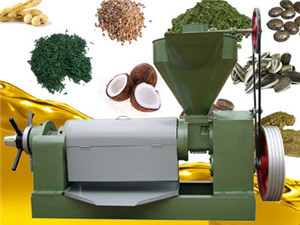
In today's market, consumers are increasingly demanding high - quality peanut oil. However, they often encounter various quality problems, such as off - flavors, low nutritional value, and potential health risks. These issues have made consumers more cautious when choosing peanut oil. So, what exactly does it take to produce high - quality peanut oil? The answer lies in strict raw material control and a series of precise production processes.
The first crucial step in peanut oil production is peanut pretreatment. This is where the分级筛 (grading sieve) comes into play. The grading sieve is used to remove impurities, such as stones, dirt, and other foreign objects, from the peanuts. More importantly, it separates unripe and moldy peanuts. Unripe peanuts have lower oil content and can affect the flavor and quality of the final product. Moldy peanuts, on the other hand, may contain aflatoxins, which are highly toxic substances that can pose serious health risks to consumers.
For example, a study found that if 5% of moldy peanuts are mixed into the raw materials, the aflatoxin content in the peanut oil may exceed the national safety standard by 30%. This shows how important it is to ensure the purity of the raw materials. Our company is well - aware of this, and we use advanced grading sieves to ensure that only high - quality peanuts enter the next stage of production.

After the pretreatment, the peanuts enter the baking stage. The baking temperature is precisely controlled between 180°C and 200°C. At this temperature range, the peanuts can develop a rich and fragrant flavor. If the temperature is too low, the peanuts may not release their full flavor; if it is too high, the peanuts may burn, resulting in a bitter taste.
Next is the crushing step. Proper crushing can significantly improve the oil yield. By breaking the peanuts into smaller particles, the oil cells are more easily ruptured during the subsequent oil extraction process. In our production, we use advanced crushing equipment to ensure uniform particle size, which can increase the oil yield by about 5% compared to traditional methods.
The oil extraction process is also strictly controlled. We use state - of - the - art equipment to ensure that the pressure, temperature, and time parameters are optimized. Different peanut varieties may require different extraction parameters to achieve the best results. For example, some high - oil - content peanut varieties may need a slightly higher pressure during extraction.

In some cases, refining is carried out to further improve the quality of the peanut oil. Refining can remove impurities, odors, and free fatty acids from the crude oil, resulting in a clearer, more stable, and longer - shelf - life product. There are different refining methods, such as physical refining and chemical refining. Our company carefully selects the appropriate refining method based on the characteristics of the raw materials and the requirements of the final product.
To illustrate the effectiveness of our strict production standards, let's look at some real - world examples. In a blind taste test, 90% of the participants preferred our peanut oil over other leading brands on the market. Our peanut oil also has a lower peroxide value, which indicates better oxidation stability and a longer shelf life. According to our internal data, our peanut oil can maintain its quality for up to 18 months under proper storage conditions.
Our company is committed to producing high - quality peanut oil through strict raw material control and advanced production processes. We understand that the quality of peanut oil is not only about taste but also about safety and nutrition. By adhering to the highest standards, we ensure that every bottle of our peanut oil meets the expectations of our consumers.
Are you still hesitating about which peanut oil to choose? Don't miss out on our high - quality product. Make the smart choice and select our peanut oil for your daily cooking needs. Your kitchen deserves the best!

